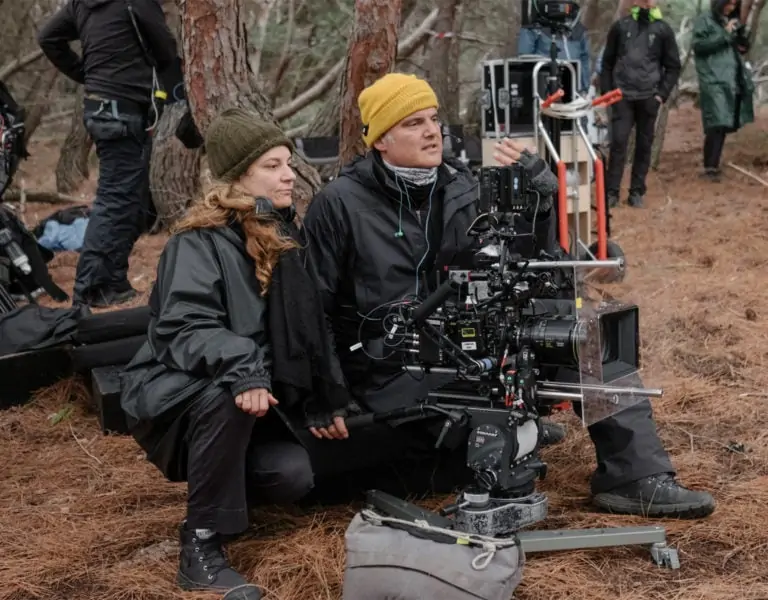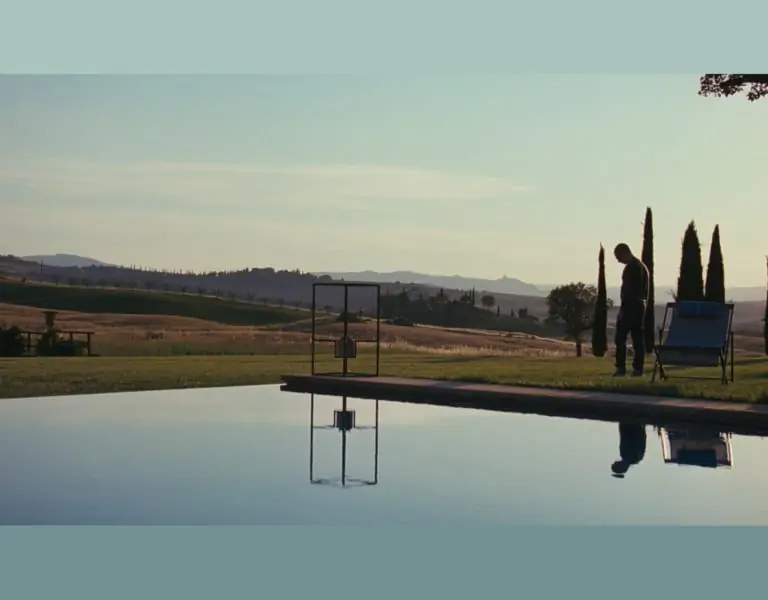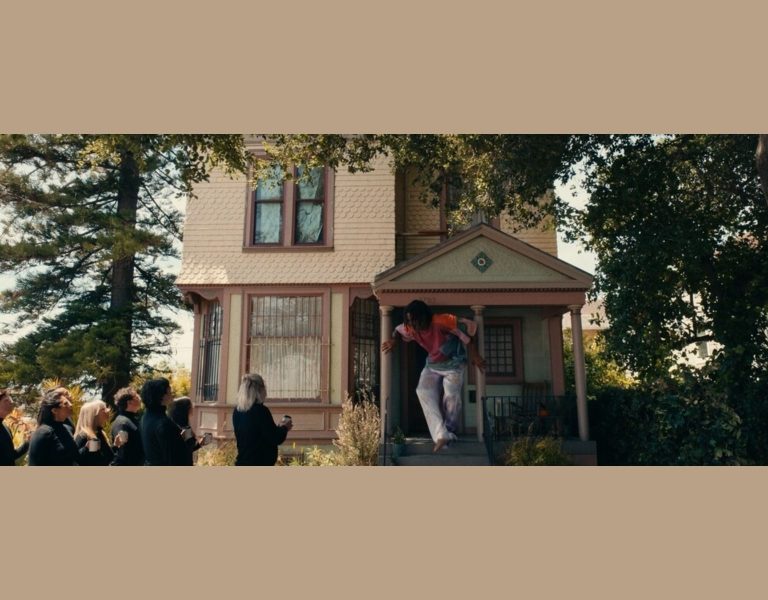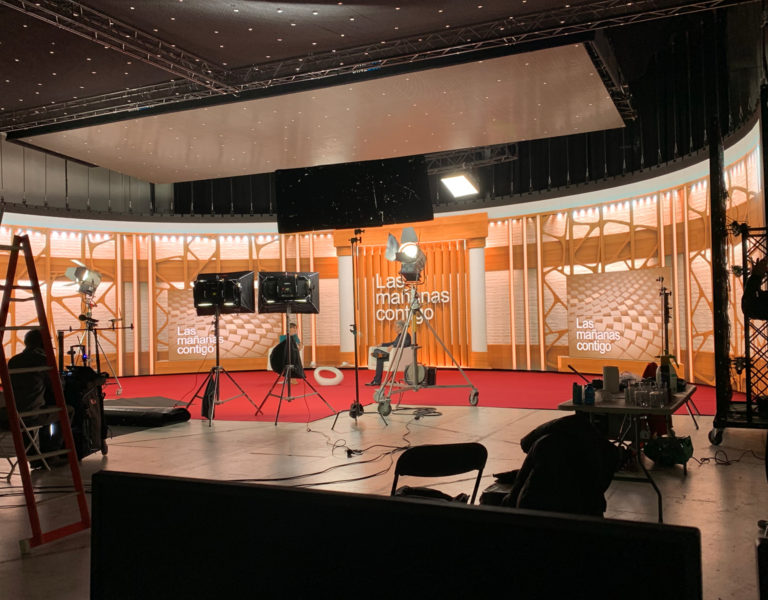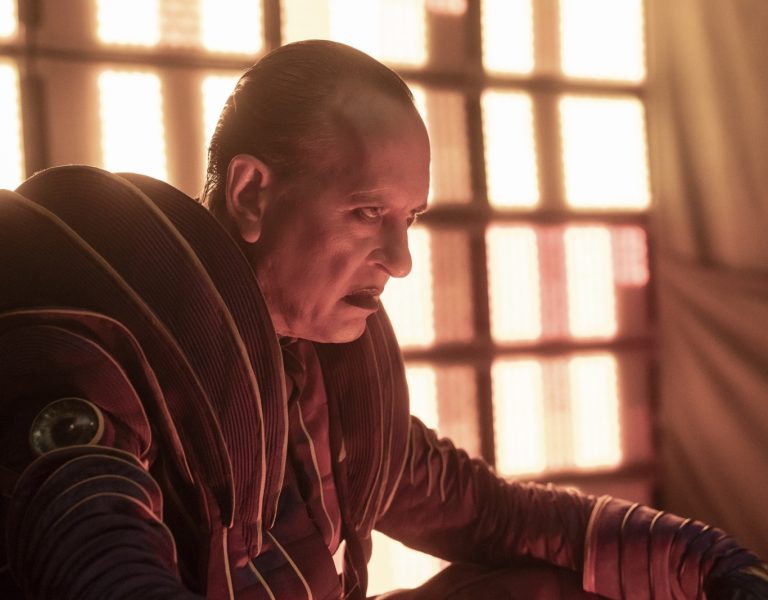Miller’s crossing
Sam Levy, the cinematographer on She Came to Me, explains the challenges of shooting and lighting in a theatre.
Rebecca Miller’s life has been steeped in the realm of creative expression. Initially influenced by her father, the revered playwright Arthur Miller, she honed her own diverse talents as an actor, writer, director, painter, and novelist. Yet, the world of opera remained uncharted territory – until now. In her latest creation, She Came to Me, a romantic comedy set against the dynamic backdrop of New York, Miller skilfully weaves a narrative that transcends generations, exploring the complexities of love.
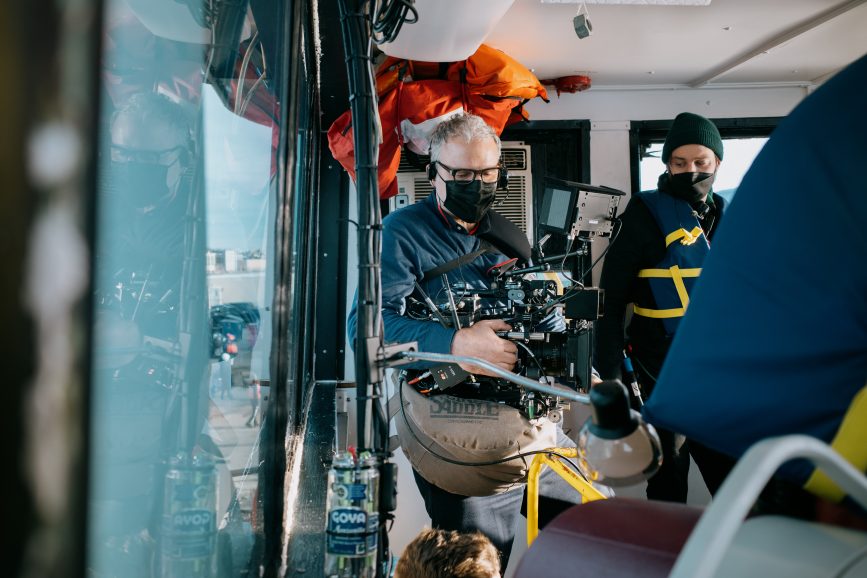
The story unfolds through the lens of Steven Lauddem, a gifted composer portrayed by Peter Dinklage, who grapples with creative stagnation while striving to complete his opera. Steven’s life takes an unexpected turn when a serendipitous encounter with a remarkable woman reignites his creative flame, setting the stage for newfound inspiration. Amidst the bustle of the city, the storyline also delves into the blossoming romance of two spirited teenagers, showcasing the resilience and beauty of youthful love. Concurrently, we witness Steven’s spiritually-conflicted, OCD-addled therapist wife, Patricia (Anne Hathaway) as she braces herself for a higher calling.
The cinematographer tasked with capturing the action, Sam Levy, elaborates on how he engaged the DI colourist, Peter Doyle at PostWorks in New York, right from the outset to ensure a clear vision of the film’s final look.
“The relationship between colourist and cinematographer is a sacred bond to me. On She Came to Me, I began by showing my colourist Peter a mood board of paintings and photographs that expressed the essence of the look I was going for. This then sparked a wonderful conversation about opera, tug boats and the history of cinema. Rebecca and I are both very taken with the work of photographer Ernst Haas. In particular the quality of his reds. It just so happens that Peter owns a print of Ernst’s… and there we were! This conversation with Peter informed how I shot my preliminary tests and shaped the customised colour pipeline which Peter and I built for the film. We used this colour design to build our dailies and to construct the final look of the film.”
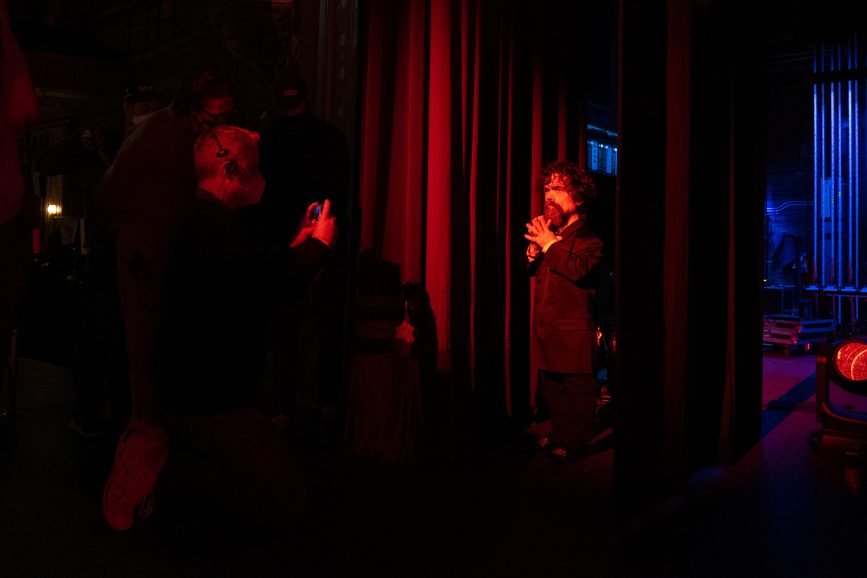
Levy also found working with Miller particularly beneficial due to her strong emphasis on visual storytelling.
“Rebecca is a painter, an illustrious author and she was also an actor for many years – creating images is in her blood,” he adds. “I love her colour vocabulary – she won’t say red’, instead she’ll say ‘cerise’, or she’ll talk about ‘absinthe’ and ‘cerulean’ – words most people would never invoke when discussing colour. She has a very sophisticated colour sense, something you can especially see in her wardrobe.”
Miller relied heavily on Levy for technical expertise and support.
“Actor blocking, camera blocking, choosing the camera and lenses – these are expressed through a deep collaboration between Rebecca and I,” he continues. “She’s not neurotic about the camera nor prescriptive about what film tools we should be using.”
Levy, on the other hand, is very opinionated when it comes to choosing the right kit.
“For this film, I tested both the Sony Venice and the original ARRI Alexa Mini, but I fell into a groove with the Alexa LF due to [ARRI’s] exceptional colour science,” he explains. “The fusion of the ARRI LF camera, the Tribe7 Blackwing7 lenses and the Angénieux Optimo 24-290mm T2.8 zoom lens, especially considering the operas, was crucial. For lighting we used ARRI SkyPanels exhaustively. I had used the Alexa LF camera on one other film called, Confess, Fletch, directed by Greg Mottola. The camera has two Alexa Mini sensors stitched together so it’s double the resolution – more like a large-format still camera.”
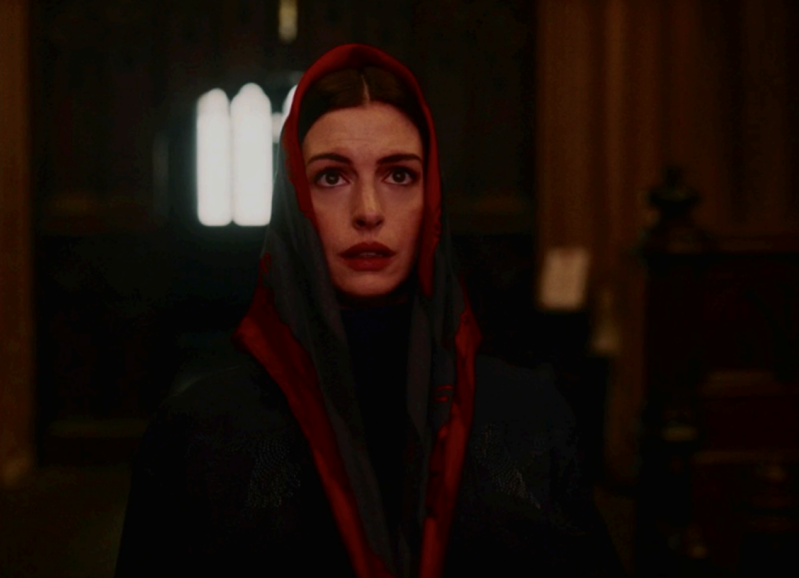
Dynamic performances
Levy knew that capturing these operas perfectly was the core of the film, because they mirrored the principal characters’ emotional arc in various ways. The colour palette within the operas showcased vivid colours. Ensuring these operas were brought to life in a dynamic and accurate manner was the top priority.
Nevertheless, Levy and his team faced many logistical challenges.
“I always shoot comprehensive camera and lighting tests when starting a project. I try every conceivable movie camera and many different pairings of lenses. Creating a bespoke set of tools for each film is a crucial step for me. On She Came to Me I did preliminary tests at my camera house, TCS, with the invaluable help of owners Oliver and Erik Schietinger. Once I picked the Blackwing7 lenses and Alexa LF camera, my camera crew and I did extensive hair, makeup and lighting tests with our principal actors on a stage. There, my gaffer John Raugalis and I examined how best to light Anne Hathaway, Marisa Tomei and Peter Dinklage using our special camera and lenses. It is here that I get a ringside seat and watch the characters come to life for the very first time. Nothing is more exciting!”
Although the opera scenes play a crucial role in the movie, the budget and schedule didn’t extend to endless tech rehearsals on the theatrical stage. Levy devised a solution for successful filming at the United Palace Theatre in Washington Heights, Manhattan.

“In addition to our extensive opera scenes on the main stage, we filmed many scenes in the theatre lobby,” Levy adds. “The opera scenes required strategic tech rehearsals and pre-lighting and the only time available for this was while we were filming our extensive lobby scenes. A special lighting team worked carefully to prep our operas while we filmed in the lobby. I would run back and forth all day to supervise lighting the opera onstage while my team would change camera and lighting positions in the lobby. I leaned heavily on our wonderful 1st AD Josh Muzaffer on those days!
“Rebecca, though highly focused on logistics as a producer, relied on my input for both logistical and creative aspects. We meticulously planned shot lists and photo boards to capture a variety of setups. The day spent filming on stage was dedicated to achieving a specific lighting effect, demanding a controlled environment.”
In a pivotal scene, Patricia undergoes a profound spiritual transformation, accentuated by an intricately designed light pattern on a wall. Levy details the team’s approach, emphasising how the play of light symbolically conveys her metamorphosis. “We achieved this effect using a vintage Big Eye 10K, a beautiful tungsten lamp known for its amber-butterscotch hue, now scarce due to environmental concerns and limited production,” Levy continues. “There is no light quite as beautiful as a tungsten filament pushed through an old glass Fresnel lens. Just breathtaking.”
The objective was to capture the essence of late afternoon sunlight streaming through a window, akin to sunlight filtering through trees and reflecting on walls. This poignant, dialogue-free visual concept conceived by Levy and Miller offers a brief yet powerful storytelling moment, eloquently conveying Hathaway’s character’s emotional journey through light.
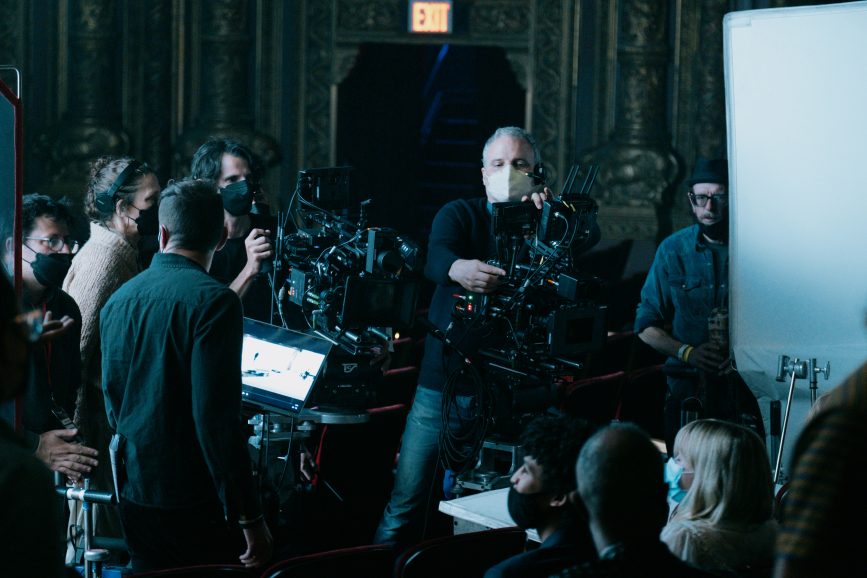
Family matters
The son of a former violinist in the Boston Symphony Orchestra, Levy inherited an affection for live performances. He was honoured to work with the great composer Bryce Dessner, who scored the soundtrack for the movie.
“I was profoundly exposed to music during my childhood and developed a deep appreciation for opera,” he adds. “With this film, I aimed to preserve the story’s musical core, integrating the music itself with scenes featuring composers and musicians. My father practiced tirelessly for hours every day, an intense environment to grow up around.” Leveraging this background, Levy sought to infuse the narrative of She Came To Me with musicality, going beyond a mere shooting schedule to craft a film. “Immersing ourselves in the operas was paramount,” he adds. “Weekends were spent rehearsing and meticulously staging with the opera performers, an extremely rewarding experience.”

Unchartered waters
Filming Marisa Tomei in her role as Katrina, the tugboat captain, posed another significant challenge. Capturing scenes on a functioning tugboat at sea required meticulous coordination with tide schedules and navigating the complexities of a small vessel. “The film’s ambitious scale made it vital to strike a delicate balance – honouring the film’s vision while adhering to set schedules and budget limitations,” Levy says. “The focus was on optimising resources to maintain quality and avoid any unnecessary budgetary or time overruns.”
Blue and green screens were not used in the film, while visual effects (VFX) were employed only once – in Levy’s favourite scene. “It’s where Dinklage’s character disembarks from the tugboat, strolls along the pier, gets distracted, and eventually stumbles into the water,” Levy explains. “During this sequence, we transition to underwater shots achieved practically using a weight system to submerge him. The load mechanism was crucial to maintaining his position underwater, allowing for effective emoting and performance.
“Anticipating a substantial VFX clean-up process for safety, we meticulously coordinated the underwater shots,” Levy continues. “The crew initiated the sequence about 50 feet away, utilising an underwater rig. As the camera pushed in closer and moved downward for a tight close-up, Peter had to maintain his position precisely. This pivotal scene sparks inspiration for a new opera, directly tying into the essence of the movie’s title. It involved a combination of underwater and practical special effects. We had a lot of VFX cleanup later because a weighted safety line was behind Peter that we wanted to erase, holding him in place. That was the only deliberate moment where we knew we had to be smart about cleaning up.”
Levy’s unwavering dedication to authenticity, even amidst artistic elements, adds a distinct touch to the production. Through this cinematic journey, the film honours the delicate balance between vision, execution, and resource optimisation, embodying the spirit of creative exploration.
